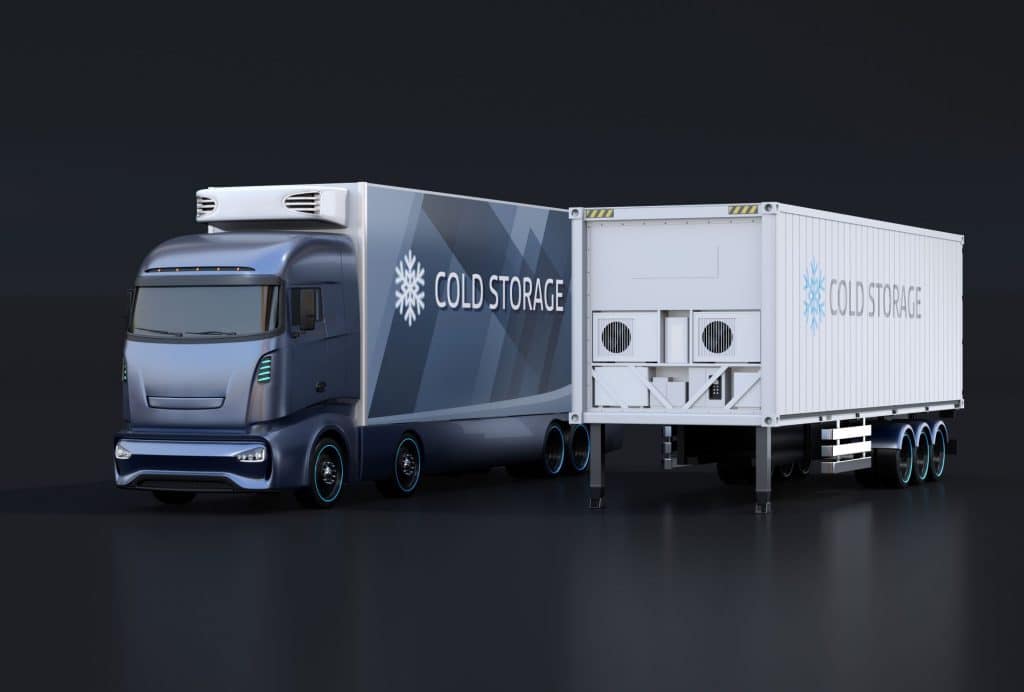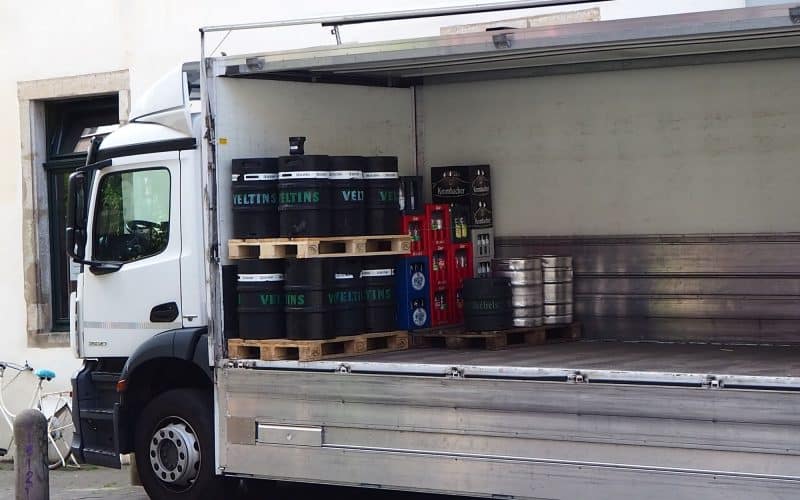When navigating the complex maze of logistics, upholding the integrity of your temperature-controlled products, whether artisanal beers, fine cheeses, or critical pharmaceuticals, is essential.
These items must sustain quality throughout their journey – from the production line to the customer’s doorstep. Cold chain shipping is the ace up your sleeve in achieving this daunting task.
This technique works behind the scenes, safeguarding your goods’ integrity every step of the way. Curious about how it all plays out? Delve into the following sections to unravel the best practices for transporting temperature-sensitive items, regardless of their nature. By the end, you’ll know how to turn these practices to your advantage, enhancing your business operations.
Understanding Cold Chain Shipping

What’s cold chain shipping? It’s a temperature-controlled supply chain method ensuring that products maintain a specific temperature range from production to the point of use. Why is maintaining a particular temperature so crucial?
It’s a critical factor, especially in industries such as food and beverages, pharmaceuticals, and biotech, where even slight temperature changes can have a massive impact on the quality and safety of products.
If you want to know how it works, picture a well-orchestrated symphony where each movement seamlessly blends into the next. Similarly, climate-controlled shipping integrates production, storage, and distribution in a thermoregulated environment, ensuring a consistent temperature for sensitive products.
- The Right Packaging
Selecting the appropriate packaging is crucial as it serves as your first line of defense. Consider it as equipping your products to withstand potential temperature fluctuations and physical damage. Insulated packaging solutions such as polystyrene boxes or vacuum-insulated panels are commonly utilized to maintain the desired temperature.
However, the packaging alone is not the sole consideration. Specialized coolants like gel packs, dry ice, or phase change materials can also be employed depending on the required temperature range. These tools effectively absorb excess heat, preserving the product’s temperature and quality.
- Monitoring The Temperature
Now, you’ve got your product well-packed, but how do you ensure it stays within the required temperature range during transit? That’s where continuous temperature monitoring steps in, acting as your vigilant watchman.
Using real-time temperature data loggers, GPS, and IoT technology, you can monitor the temperature throughout the journey, ensuring it remains within the desired range. If any deviation occurs, the system triggers alarms, allowing swift remedial action. This proactive approach drastically reduces the risk of product spoilage.
- Ensuring Regulatory Compliance
Transporting temperature-sensitive products encompasses more than maintaining the cold chain; it also requires compliance with regional and international regulations. Regulatory bodies, such as the Food and Drug Administration (FDA) and the European Union (EU), closely monitor temperature-sensitive goods’ transportation and establish guidelines for their safe and efficient transport. Staying updated with these restrictions is crucial to ensure that your shipping practices meet the required standards consistently.
Maintaining compliance is essential for various reasons, including legal obligations, product quality, and reputation protection. Familiarize yourself with the specific requirements outlined by the FDA, EU, and other relevant regulatory bodies. These standards cover packaging, storage, handling, and documentation. By adhering to these guidelines, you can transport temperature-sensitive products safely while minimizing the risk of quality issues or regulatory non-compliance.
- Training Your Staff
You must understand your team’s significant role in the grand scheme. Indeed, your staff members are the unsung heroes who navigate the intricate world of temperature-controlled shipping, ensuring its smooth operation daily.
You’re equipping them with the necessary knowledge and skills by implementing comprehensive training programs that enlighten them about the best practices, protocols, and emergency procedures. This invaluable asset minimizes the risk of human error, thereby ensuring a more dependable and efficient thermoregulated operation. Remember, a well-trained team is the backbone of a successful and resilient supply chain.
- Implementing A Contingency Plan
Preparing for unexpected events is a wise strategy in logistics. Situations like power outages, equipment failure, or natural disasters can potentially disrupt the refrigerated chain, putting your temperature-sensitive goods at risk. It is essential to have a well-thought-out contingency plan in place.
Let’s consider an example scenario. Suppose you are a distributor of perishable food items, and a severe storm causes a widespread power outage in the area. Without electricity to power the refrigeration units, your goods could spoil if improperly handled. In this case, your contingency plan could include the following measures:
- Alternative power sources
- Communication protocols
- Temporarily transferring products
- Rapid response team
- Continuous monitoring
By having a well-prepared contingency plan incorporating these measures and other relevant strategies, you can effectively navigate unforeseen challenges in the logistics process. The plan aims to minimize potential losses, safeguard the quality of your temperature-sensitive goods, and ensure a swift return to normal operations once the disruption is resolved.
- Regular Equipment Maintenance
Maintaining regular upkeep of transportation and storage equipment is crucial for a seamless climate-controlled chain. The equipment, which includes refrigerated trucks, coolers, freezers, and temperature monitoring devices, needs consistent attention to ensure optimal performance. Regular checks and servicing can help identify potential problems early and reduce the risk of equipment failure that could compromise the operational flow.
- Building Strong Supplier Relationships
Establishing solid relationships with all suppliers and partners in your supply chain can lead to better communication and coordination. It can also encourage quicker issue resolution, which can be critical in maintaining the integrity of thermoregulated products.
- Conducting Regular Audits
Regular audits of your climate-controlled processes help identify any weak points or areas for improvement. These audits should cover everything from packaging and storage to transportation and delivery.
- Optimizing Delivery Routes
Optimizing delivery routes can ensure that products spend the least time in transit, reducing the risk of temperature deviations. You can achieve this by using route planning software and other logistical tools.
- Implementing A Validation Process
A validation process is like a series of tests or checks to ensure your thermoregulated transportation system works properly every time. It’s all about proving that your system can reliably keep products at the right temperature from start to finish. Here’s what it usually includes:
- Design Checks – You ensure the equipment or process is designed right from the start to meet your needs. It’s like ensuring you have all the ingredients before cooking your favorite recipe.
- Installation Checks – This step ensures you install everything correctly, adhering to the manufacturer’s guidelines.
- Operational Checks – In this phase, you’re testing the system under different conditions to guarantee it can handle whatever comes its way. Consider it like test-driving a car on different terrains and weather conditions.
- Performance Checks – Finally, you confirm that the system works well under normal conditions for a certain period. It’s like trying out a new workout routine and ensuring it gives the desired results over time.
All these steps in the validation process help to spot and fix potential issues early. You can trust your system to keep your temperature-sensitive products safe during transportation.
Conclusion
Remember, maintaining the quality of temperature-controlled products during transport requires careful planning, continuous monitoring, and stringent controls. Each of these best practices plays a vital role in ensuring that your temperature-sensitive goods arrive at their destination in optimal condition.






